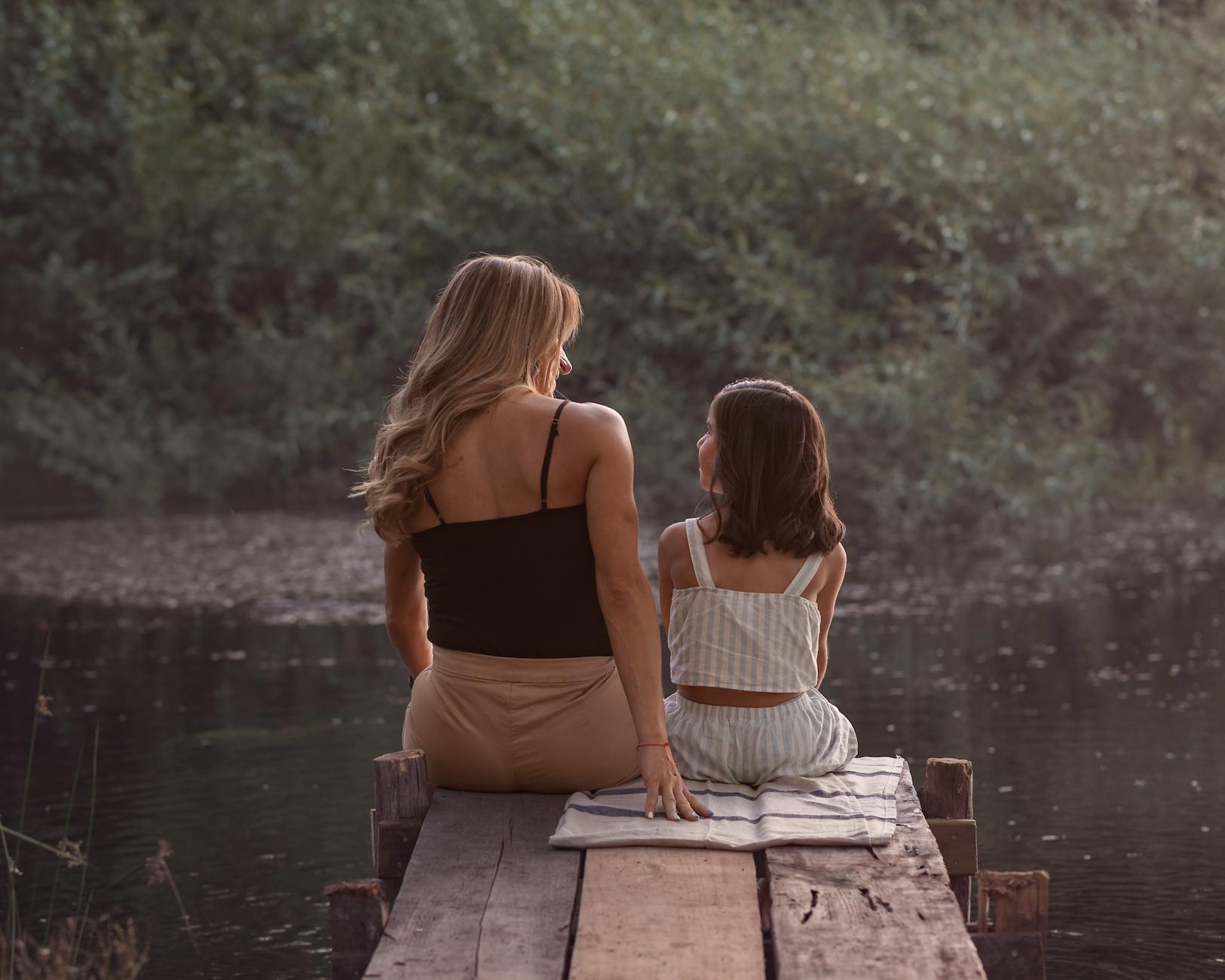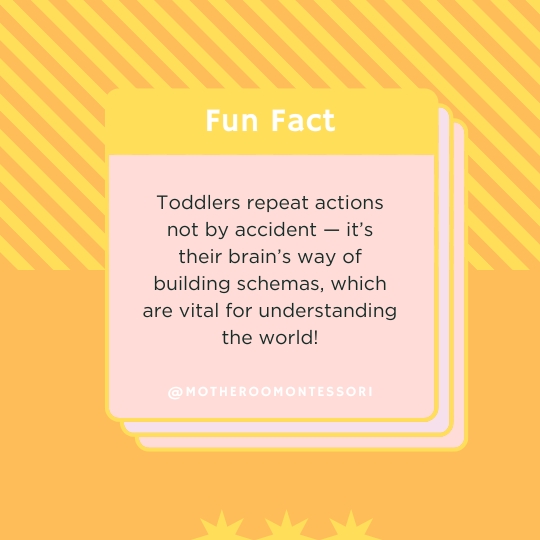Risky play is becoming increasingly recognised as a vital component of child development, yet many parents and educators find themselves caught in a delicate balancing act between allowing children to explore their boundaries and keeping them safe. This blog post examines what risky play actually entails, its research-backed benefits, and how adults can support children’s engagement in healthy risk-taking activities.
What is Risky Play?
Risky play can be defined as “thrilling and exciting forms of physical play that involve uncertainty and a risk of physical injury”. Rather than being a separate category of play, it represents what children naturally do when allowed freedom to explore, test boundaries and challenge themselves physically and emotionally. As Marc Armitage notes, “Taking risks is simply one of the things children do when they are playing and, because a significant amount of playing is about pushing boundaries and extending ourselves, it turns out that most play is risky in one way or another”.
Types of Risky Play
Research by Ellen Beate Hansen Sandseter has identified eight distinct categories of risky play that children engage in:
- Play with great heights: Climbing, jumping, balancing at height
- Play with high speed: Running, sliding, cycling at high speeds
- Play with dangerous tools: Using knives, saws, axes under supervision
- Play near dangerous elements: Activities near water, fire pits, or cliffs
- Rough and tumble play: Wrestling or play fighting
- Play where children can “disappear” or get lost: Exploring independently
- Play with impact: Crashing into things repeatedly for fun
- Vicarious play: Experiencing thrill by watching others engage in risk
Each of these categories offers unique developmental opportunities and challenges for children of different ages and abilities.
The Research-Based Benefits of Risky Play
Physical Health and Development
Research consistently demonstrates that risky play contributes significantly to children’s physical development. A systematic review published in 2015 found “overall positive effects of risky outdoor play on a variety of health indicators and behaviours, most commonly physical activity”. When children engage in activities like climbing, balancing, and jumping from heights, they develop strength, coordination, and body awareness that form the foundation for lifelong physical literacy.
In an experimental study by Engelen et al., children provided with loose materials for risky play (such as tyres and milk crates) and whose parents received “risk reframing” education showed increased moderate to vigorous physical activity compared to control groups. These benefits remained evident even two years after the intervention.
Mental Health Benefits
Perhaps most compelling is the emerging evidence linking risky play to improved mental health outcomes. A recent UK study found that children aged 2 to 4 years who spend more time engaged in risky play have lower levels of internalising problems such as anxiety and depression, and higher positive mood.
Dodd and Lester explain this connection by suggesting that risky play supports children’s learning about uncertainty, physiological arousal, and effective coping mechanisms. As children experience the thrill of calculated risks and learn to manage their emotional responses to challenges, they develop resilience that protects against anxiety disorders.
This theory is supported by research showing that overly protective parenting approaches that restrict risky play may actually increase the likelihood of anxiety, both in childhood and into adulthood.
Risk Assessment and Decision-Making Skills
When children engage in risky play, they are essentially conducting their own “science experiments”-testing their capabilities and learning to evaluate risk for themselves. Each risky play experience offers an opportunity to develop risk assessment abilities, making judgements about their own safety, and learning from both successes and failures.
As noted by researchers, “experience with risks during childhood is believed to assist with developing risk management strategies, and the ability to negotiate decisions about substance use, relationships and sexual behaviour during adolescence”. In other words, the skills developed through risky play in early childhood have far-reaching implications for adolescent decision-making.
Addressing Common Concerns
Despite the compelling evidence supporting risky play, many adults remain hesitant to embrace it. Much of this hesitation stems from misunderstanding the difference between a hazard (which children cannot assess for themselves and offers no clear benefit) and a risk (which children can recognise, evaluate, and decide upon a course of action).
It’s worth noting that research shows the likelihood of serious injury from risky play is actually quite low. According to one study, “children would have to spend three hours a day engaging in risky play for 10 years before they were likely to get an injury that required medical attention”. Additionally, of the approximately two million childhood accidents treated in hospitals each year, less than 2% involve playground equipment.
Supporting Risky Play: Practical Considerations
For parents and educators looking to support risky play, consider the following approaches:
Distinguish Between Hazards and Risks
Remove or mitigate genuine hazards (like exposed sharp objects or busy roadways) but allow for manageable risks that children can assess themselves.
Practice the “17 Second Rule”
When feeling uneasy about children’s play, observe for 17 seconds before intervening. Often, children can navigate risks safely without adult intervention.
Adopt Benefit-Risk Analysis
Rather than traditional risk assessments focused solely on minimising risk, consider a benefit-risk approach that weighs potential benefits alongside potential harms.
Provide Graduated Challenges
Offer opportunities appropriate to children’s developmental stage rather than age. Even infants and toddlers can engage in developmentally appropriate forms of risky play.
Trust Children’s Capabilities
Research shows that children are remarkably good at knowing their own limits. As they engage in risky play, they learn to identify the point when they might need to stop and reassess the situation.
Conclusion
The evidence is clear: risky play is not something to be feared but rather embraced as an essential component of healthy child development. As we’ve seen from the research, the benefits span physical development, mental health, and crucial life skills such as risk assessment and decision-making.
Rather than seeking to eliminate all risk from children’s play environments, perhaps our focus should shift to creating opportunities for appropriate challenge and managed risk-taking. By doing so, we support children not only in experiencing the joy and exhilaration of play but also in developing the resilience and capabilities they’ll need throughout their lives.
As researchers at the Play Safety Forum concluded: “We must not lose sight of the important developmental role of play for children in the pursuit of the unachievable goal of absolute safety”.
References
- “Children’s risky play and mental health benefits” – Be You
- “Risky play is not a category – it’s what children DO” – Marc Armitage, Reggio Australia
- “An Introduction to learning through risk with Ellen Sandseter” – World of Education
- “What is the Relationship between Risky Outdoor Play and Health in Children” – PubMed
- “What is the Relationship between Risky Outdoor Play and Health in Children: A Systematic Review” – National Institute for Play
- “Outdoor play: Risky play and mental health” – Child Encyclopedia
- “Weighing up risks and benefits in children’s play” – Blue Mountains City Council
- “Managing Risk in Play Provision” – Play Safety Forum
- “Adventurous play – developing a culture of risky play” – ACECQA
- “Risk and Safety” – Play Australia
- “Risky Play” – Boston University Children’s Center
- “PhD project, Children’s risky play” – Ellen Beate Hansen Sandseter
- “What is the Relationship between Risky Outdoor Play and Health in Children: A Systematic Review” – PMC
- “Outdoor Risky Play” – Encyclopedia on Early Childhood Development
- “Effects of an intervention to promote nature-based risky play in early childhood” – Science Direct
- “Healthy childhood development through outdoor risky play” – Canadian Paediatric Society
- “Risky play and children’s safety: Balancing priorities for optimal child development” – Brussoni et al.
- “Risky play in early childhood: What is it and why it matters?” – YMCA Whittlesea Children’s Programs
- “Supporting risky play opportunities” – Aistear Siolta
Citations:
- https://beyou.edu.au/about/be-you-stories/implementation-support/risky-play-for-children-and-mental-health-benefits
- https://reggioaustralia.org.au/wp-content/uploads/2021/08/Risky-play-is-not-a-category-its-what-children-do-2011-REGGIO-NETWORK-MEETING-SEP21.pdf
- https://worldofeducation.tts-international.com/episode-5-an-introduction-to-learning-through-risk-with-ellen-sandseter/
- https://pubmed.ncbi.nlm.nih.gov/26062038/
- https://nifplay.org/what-is-the-relationship-between-risky-outdoor-play-and-health-in-children-a-systematic-review/
- https://www.child-encyclopedia.com/outdoor-play/according-experts/risky-play-and-mental-health
- https://www.bmcc.nsw.gov.au/sites/default/files/docs/Risks_Benefits_Childrens_Play.pdf
- https://playsafetyforum.wordpress.com/wp-content/uploads/2015/03/managing-risk-in-play-provision.pdf
- https://www.acecqa.gov.au/sites/default/files/2020-11/AdventurousPlay%E2%80%93DevelopingACultureOfRiskyPlay.pdf
- https://www.playaustralia.org.au/sites/default/files/LibraryDownloads/Managing%20risk%20in%20play%20provision,%20a%20policy%20statement.pdf
- https://www.bu.edu/childrens-center/files/2020/07/Risky-Play.pdf
- https://ellenbeatehansensandseter.com/fou-prosjekter/phd-prosjekt/
- https://pmc.ncbi.nlm.nih.gov/articles/PMC4483710/
- https://www.child-encyclopedia.com/outdoor-play/according-experts/outdoor-risky-play
- https://www.sciencedirect.com/science/article/abs/pii/S0272494417301512
- https://cps.ca/en/documents/position/outdoor-risky-play
- https://stnicks.org.au/news/risky-play-friend-or-foe/
- https://childrensprograms.whittlesea.ymca.org.au/risky-play-in-early-childhood-what-is-it-and-why-it-matters/
- https://www.aistearsiolta.ie/en/play/resources-for-sharing/risky-play-birth-six-years-.pdf
- https://stnicks.org.au/news/risky-play-friend-or-foe/
- https://ellenbeatehansensandseter.com
- https://www.acecqa.gov.au/sites/default/files/2020-11/AdventurousPlay%E2%80%93DevelopingACultureOfRiskyPlay.pdf
- https://playvolutionhq.com/wp-content/uploads/2020/08/Ellen-Sandseters-6-Categories-Of-Risky-Play.pdf
- https://www.tandfonline.com/doi/full/10.1080/21594937.2022.2152531
- https://www.bienenstockplaygrounds.com/wp-content/uploads/2024/02/Ellen-Sandseters-6-Principles-of-Risky-Play.pdf
- https://pubmed.ncbi.nlm.nih.gov/34438572/
- https://www.childrenandnature.org/resources/research-digest-risk-taking-in-natural-environments/
- https://www.child-encyclopedia.com/outdoor-play/according-experts/outdoor-risky-play
- https://osf.io/a35v7/
- https://aifs.gov.au/resources/policy-and-practice-papers/nature-play-and-child-wellbeing
- https://injuryprevention.bmj.com/content/21/5/344
- https://www.sciencedirect.com/science/article/pii/S1353829224002016
- https://research-management.mq.edu.au/ws/portalfiles/portal/211847419/211844009.pdf
- https://ampa.playright.org.hk/p/rba202403
- https://www.playengland.org.uk/newsblog/interview-with-anita-grant-for-modern-mindset-with-adam-cox-erae3-d2xj8
- https://ltl.org.uk/resources/managing-risk-in-play-provision-implementation-guide/
- https://outdoorclassroomday.org.uk/wp-content/uploads/sites/2/2016/06/160606_PROJECTDIRT_ECD_BOOK7_A4-1.pdf
- https://playwork.foundation/2022/08/22/10-reasons-to-continue-providing-adventure-playgrounds/
- https://warwick.ac.uk/fac/cross_fac/iatl/research/reinvention/archive/volume9issue2/saunders/
- https://www.rospa.com/school-college-safety/Teaching-Safety/Risk
- https://londonadventureplaygrounds.org.uk/about-adventure-playgrounds/the-case-for-adventure-playgrounds/
- https://theeducationhub.org.nz/promoting-childrens-risky-play-in-outdoor-learning-environments/
- https://www.rospa.com/school-college-safety/Teaching-Safety/Why-safety-and-risk-education
- https://scholarworks.bgsu.edu/cgi/viewcontent.cgi?article=1024&context=ijpp
- https://www.rospa.com/Policy/play-safety/Advice/Legal-Aspects
- https://www.kclc.com.au/post/the-importance-of-risky-play-in-the-early-learning-environment
- https://education.nsw.gov.au/early-childhood-education/leadership/news/loose-parts-and-risky-play
- https://www.aistearsiolta.ie/en/play/resources-for-sharing/risky-play-birth-six-years-.pdf
- https://www.acecqa.gov.au/sites/default/files/2023-01/EYLF-2022-V2.0.pdf
- https://education.nsw.gov.au/teaching-and-learning/curriculum/mathematics/everyday-maths/high-school/resources/risk-board-game
- https://www.earlychildhoodaustralia.org.au/wp-content/uploads/2023/03/EDL-1903-e-factsheet-from-EDL-Vol17-No3.pdf
- https://www.careforkids.com.au/child-care-provider-articles/article/189/why-risky-play-is-important-for-young-children
- https://www.education.sa.gov.au/docs/infrastructure/property-services/outdoor-learning-environments-standard.pdf
- https://eyfs.info/articles.html/general/risk-taking-in-the-early-years-r430/
- https://www.bu.edu/childrens-center/files/2020/07/Risky-Play.pdf
- https://www.education.sa.gov.au/docs/p-and-c/whs/outdoor_learning_guide_riskbenefit_template.pdf
- https://childaustralia.org.au/risky-play/
- https://pmc.ncbi.nlm.nih.gov/articles/PMC4483710/
- https://cps.ca/en/documents/position/outdoor-risky-play
- https://www.littlebrightexplorers.com.au/post/the-importance-of-risky-play-in-early-childhood-education
- https://playingout.net/blog/adventurous-play-as-an-antidote-to-anxiety/
- https://pmc.ncbi.nlm.nih.gov/articles/PMC9207949/
- https://www.centenarychildcare.com.au/post/why-risky-play-is-actually-good-for-kids-and-why-we-encourage-it
- https://readlion.com/risky-play-promotes-physical-and-mental-health-while-teaching-kids-sound-character-traits/
- https://cc.au.dk/en/recreational-fear-lab/blog/view/artikel/risky-play-as-a-recreational-fear-activity
- https://www.mdpi.com/1660-4601/19/13/7889
- https://ccprn.com/risky-play-essential-for-healthy-child-development/
- https://ellenbeatehansensandseter.com/about/
- https://worldofeducation.tts-international.com/episode-6-the-benefits-of-risk-taking-in-the-early-years/
- https://worldofeducation.tts-international.com/episode-5-an-introduction-to-learning-through-risk-with-ellen-sandseter/
- https://www.tandfonline.com/doi/abs/10.1080/13502930701321733
- https://www.instagram.com/reel/C2z_FpOxoUh/
- https://cedar.wwu.edu/envs_facpubs/19/
- https://www.playengland.org.uk/publications
- https://www.playengland.org.uk/newsblog/child-safety-experts-welcome-game-changing-new-international-benchmark-that-gives-a-green-light-to-more-adventurous-play
- https://early-education.org.uk/taking-risks-in-play/
- https://www.earlychildhoodaustralia.org.au/wp-content/uploads/2017/07/Helen-Little-Risky-play_revised-July2017_2.pdf
- https://scholarworks.bgsu.edu/ijpp/vol2/iss1/5/
- https://www.famly.co/blog/risky-play-early-years
- https://www.teachearlyyears.com/nursery-management/view/the-benefits-of-risky-play
- https://www.froebel.org.uk/uploads/documents/Froebel-Trust-Research-Highlight_babies.pdf
- https://childrensprograms.whittlesea.ymca.org.au/risky-play-in-early-childhood-what-is-it-and-why-it-matters/
- https://www.motherduck.com.au/power-of-risky-play-nurturing-childrens-growth-and-resilience/
- https://riskykids.com
- https://www.whizkidz.com.au/the-role-of-play-in-developing-childrens-executive-function-skills/
- https://www.child-encyclopedia.com/outdoor-play/according-experts/risky-play-and-mental-health
- https://pubmed.ncbi.nlm.nih.gov/35805547/
- https://beyou.edu.au/about/be-you-stories/implementation-support/risky-play-for-children-and-mental-health-benefits
- https://scholar.google.com/citations?user=vxKzmO8AAAAJ












